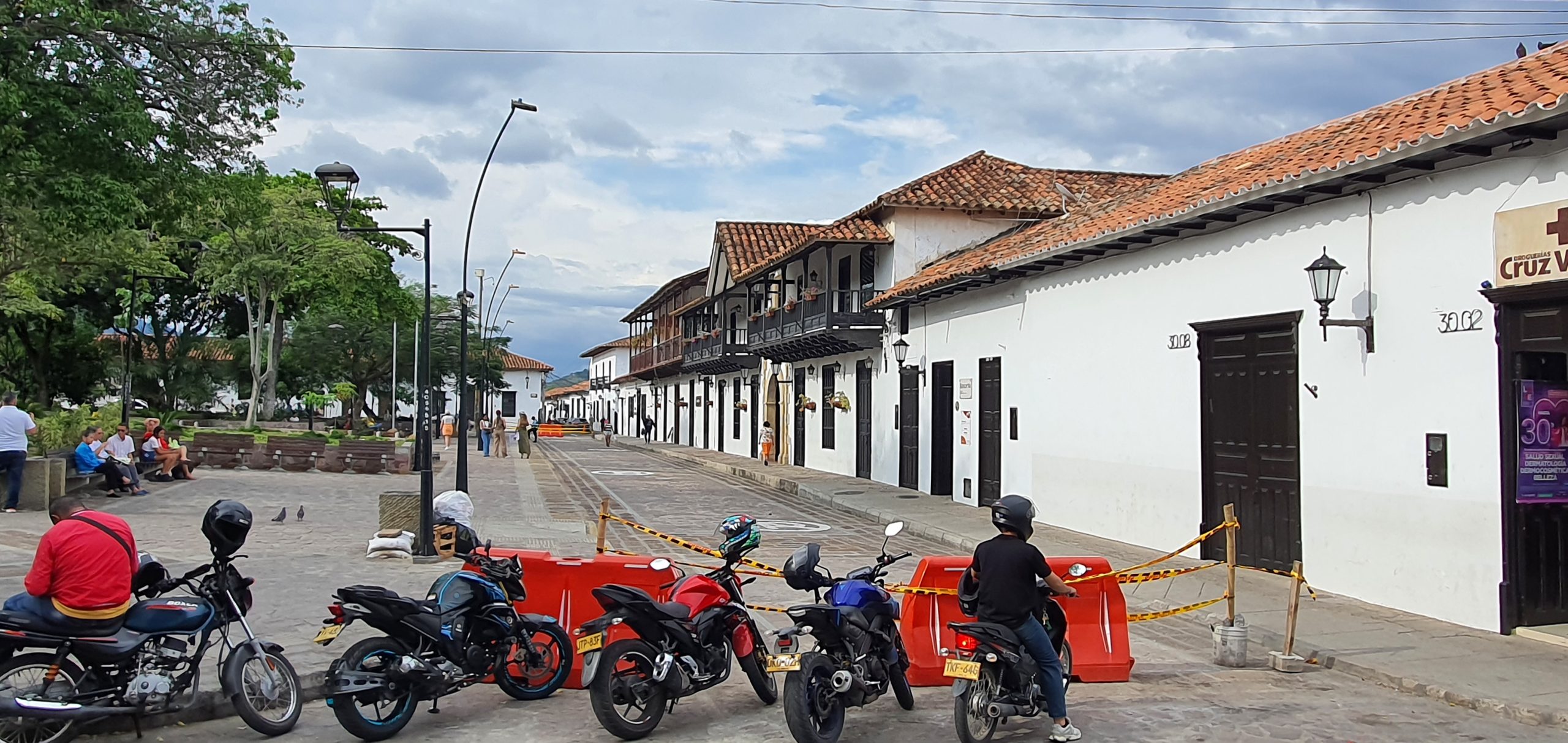The engine of our little tuk-tuk is squealing with exhaustion as we judder up the final hill. Here, the ancient paving stones aren’t joined as neatly as they are in other streets, and we bounce over the gaps until we reach the hacienda where my friend is staying.
Tuk-tuks are mainly associated with Asian countries, but I’m on the other side of the world in Barichara, hailed as Colombia’s prettiest town. Its hills pose a challenge for these underpowered engines, but some of its narrow streets make them a more sensible option than ordinary taxis.

While Colombia’s big hitters of Bogota, Medellín, and Cartagena are the biggest draw for tourists, its far smaller towns are more enchanting. Barichara is to the west, reached by long twisting roads with endless switchbacks through the Andes. It’s a tiny town of terracotta roofs over squat white houses, where the wooden window frames have mosquito nets instead of glass. The plazas and churches built from hand-carved stone date from the 18th century, and the town was declared a National Monument in 1977.

There’s an unmoving, timeless feel to this Spanish colonial gem, especially in the afternoon heat when most people are indoors sheltering from the sun. Sometimes an open door lets you peek into rooms built around open courtyards filled with plants and fountains. One door led down a narrow passageway to a bakery, where we sat in a courtyard eating empanadas hot from the oven. On the way home, we stopped for ice cream in a boutique hotel that boasts a small swimming pool with a mountain view.
Barichara comes alive in the mornings and the evenings, when its 8,000 residents do their shopping in the old-fashioned way, with separate visits to the bakery, butcher, greengrocer, and pharmacy. One liquor store doubles as a bar, where locals buy their drinks and then hang out to enjoy them together.

There’s no shortage of bars and good restaurants, like the fusion of Asian and Colombian cuisine served in Sierra Restaurant. The ramen bowl was delicious, and the atmosphere in the candlelit courtyard was even more delightful.
Colombia is so justifiably proud of these exquisite little towns that 17 of them are now part of the Pueblos Patrimonios (Heritage Towns) Tourism Network. A good public transport network means you can visit them by bus, although hiring a car lets you stop off at interesting sights en route.
The trick to enjoying these little towns is to slow down and enjoy the quirky pleasures. In Barichara, for example, there’s a cemetery where the statues illustrate what the deceased did for a profession, colourful tuk-tuks that shake you around on a tour of the town, a community centre with crafts for sale and yoga classes to attend, an open-air swimming pool for the bargain price of roughly $2, and hikes along deserted mountain trails.
One 9km walk to the town of Guane follows an ancient path through Suárez Canyon. Guane has also preserved its colonial architecture and boasts a paleontological museum with dinosaur fossils.
For other excursions, there’s La Antigua Cave, the 200m waterfalls of Juan Curí, where you can bathe in the pool, rafting on Fonce River, or paragliding from the nearby town of Curí.

These towns are all about the journey, too, along spectacular roads where sitting in a bus for a few hours is its own reward. About 75 miles north of Barichara – it sounds close, but it can be a 4-hour bus ride on these twisting routes – lies the pretty town of Girón. On the way, you pass Chicamocha Canyon, the second largest in the world after the Grand Canyon in Colorado. If you’re hiring a car, it’s well worth a stop at Panachi – an abbreviation for Parque en el Cañón del Chicamocha. A cable car goes down one side of the canyon and up the other, to an area with restaurants, a zipline, and a small museum about the native Guane people. From there, a path – or a shuttlebus ride – takes you to a 360-degree viewpoint over the canyon and surrounding hills. These little towns were hotbeds of revolution in colonial times, and an unusual sculpture at Panachi’s viewpoint commemorates a rebellion against Spanish-imposed taxes. It’s a magnificent piece of art, with rocks hurtling out of the centre and figures of the main protagonists on a platform shaped like a tobacco leaf, which was the mainstay of Colombia’s economy.

Girón itself is another colonial-era beauty with cobblestone streets, dazzling white buildings, and charming balconies. It was founded in 1638 and declared a national monument in 1959. Its central square in front of an ornate church is still the local meeting point. These days, people come to admire the view and eat ice cream, while in the past, the crowds gathered for public executions of those who dared to defy the Spanish crown. But there was no keeping the rebels down, and eventually a Declaration of Independence for Colombia was signed in 1810 in the Fraile Mansion, which now houses a museum and a restaurant.
Giron has several other museums and historic buildings to enjoy, but when your feet are ready for a rest, head up the steep side street behind the church. It leads to a hole-in-the-wall café with tables set out on the cobblestones. This is the place to indulge in a dessert of ice cream stacked into a mango shell, with the fruit, syrups, and wafers piled on top. I shared one with a friend, and we couldn’t finish it between us. Well, there was no need to hurry. The best way to pass the time in these little towns is slowly, by admiring the view over a drink and a mountain of ice-cream.


